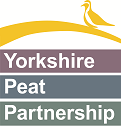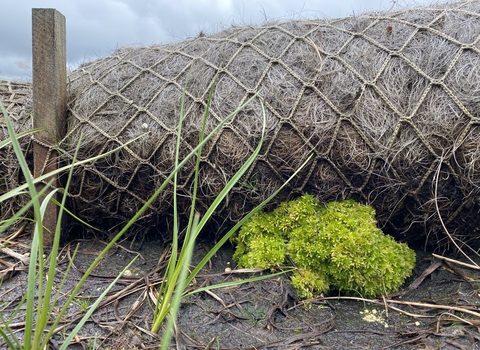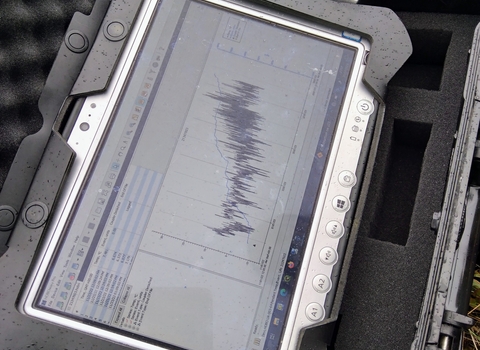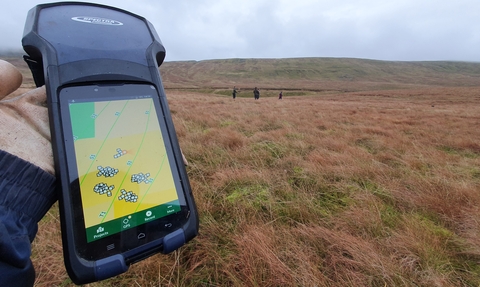
GPS mapper screen showing data collection © Beth Thomas
Our research, evidence, data and development
Monitoring
Monitoring helps us to understand the health of our peatlands and how our restoration is affecting them. For Yorkshire Peat Partnership, it comes in three strands:
Remote sensing
Remote sensing allows us both to cover peatlands much more quickly than a foot survey could and to understand the terrain in a way that is just not possible at ground level.
Satellite image of land cover
Satellite Telemetry
Yorkshire Peat Partnership is a lead innovator in using NASA Landsat and Copernicus Sentinel satellites to monitor peatland restoration. These developments, combined with our highly detailed ground survey data, enable to team to build a better picture of the current health of our peatlands. We’ve used remote sensing data to monitor moorland burning, rainfall and habitat change. There are fact sheets on each of the satellites we use on our resources page.
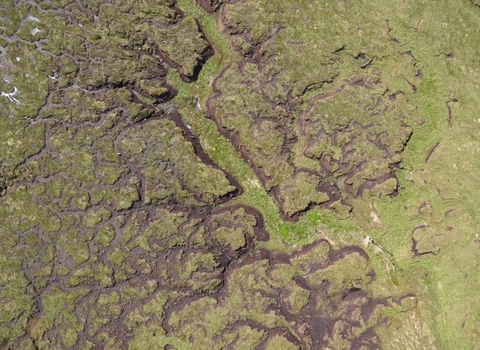
UAV picture of dendritic gully system
Unpiloted aerial vehicles
Yorkshire Peat Partnership has been using UAVs since 2012 and has surveyed 22% of our operational area. Because of repeat surveys, the actual area we have surveyed is much higher. Our pilots use UAVs fitted with red, green, blue and multi-spectral cameras to give up-to-date aerial photos at a phenomenal image resolution. This allows the team to quickly map features of a site, make 3D models and create water flow pathways, which inform the restoration programme.
Research
We have an active research programme to test out new restoration techniques and to help us better understand our peatlands.
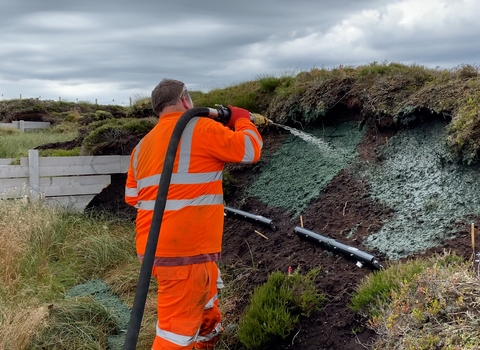
Peatfix application © Jenny Sharman
Peatfix trial
Yorkshire Peat Partnership is working with academics from the School of Environment, Education and Development at the University of Manchester and erosion control specialists, TerrAffix to find a medium that will bind the friable surface of eroding peat and promote seedling establishment despite the punishing weather on the exposed sites on which we work.
As well as reducing the overall costs of restoration, the project will look to create an outlet and potential market for products that were once considered waste (such as cut bracken) or have a limited market with a very low return (such as wool). Peatfix is funded by UK Research and Innovation through Innovate UK, the UK’s innovation agency, and specialist rental business, Vp plc.
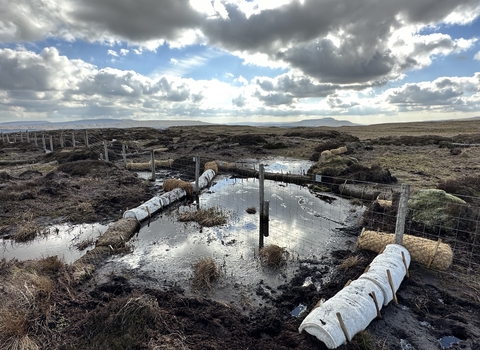
Wool log trial © Jenny Sharman
Wool logs trial
In spring 2024, we started a year long trial of wool logs as an alternative to coir logs we currently use. If successful, this would create a market for what is generally regarded as a waste product; it would also minimise the carbon miles in our restoration. We need to establish whether wool logs remain stable enough to do the job as previous trials have shown problems with the material's structural integrity once wet. There's also concern around whether wool will leach nitrates into the peat, which would be a problem in such a low nutrient habitat. Until we have satisfied ourselves on these issues, we cannot commit to widespread deployment of wool logs.
